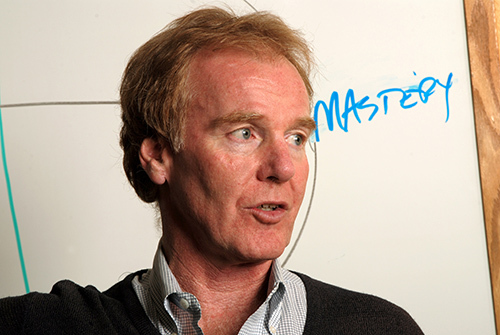
آئی بی سربراہان ہیگ میں عالمی کانفرنس میں, پطرس Senge سے بات, سسٹم پر معروف ماہر, کاروبار کے انتظام اور سیکھنے, اور ایم ائی ٹی میں سینئر لیکچرر. اس bestselling کتاب, پانچویں نظم و ضبط: سیکھنے تنظیم کی آرٹ اور پریکٹس, کمپنیوں کے لئے کس طرح فروغ دینے کی خواہش کی طرف سے ہوشیار ہونا سکھاتا ہے, عکاس گفتگو اور افہام و تفہیم پیچیدگی ترقی. مندرجہ ذیل ہے کہ انٹرویو میں, وہ کاروبار اور تعلیم میں سیکھنے کے نظام کے درمیان اختلافات پر بحث, وہ سوچتا ہے اور یہی وجہ ہے اب ہم ایک کر رہے ہیں “تعلیم پنرجہرن.” انہوں نے 21st صدی کے لئے ان جدید تعلیمی نظام کے خلاصے اور کچھ کامیاب سیکھنے حکمت عملی فراہم کرتا, such as abandoning monolithic tests and requirements, recognizing that there are many different types of learners, and the IB program. اس کے علاوہ, he looks at some of the setbacks in creating innovative change. His advocacy for “learning-centered” schools gives a jolt to education as important as the one he gave to business with پانچویں نظم و ضبط.
How do you define a learning “کے نظام”? How do you see the main differences between systems thinking for business and for education?
The obvious difference starts with the aims. In business, you are trying to achieve a business mission that involves serving some particular customer. تعلیم کے میدان میں, you are trying to grow people. This also involves the aim of serving a “customer” but in many ways the customer is a bad metaphor used too casually in education, because the students are both the “receivers” and the co-creators of learning. But mostly, they need to be seen as the co-creators. Learning occurs when learners learn. So this is not simply a matter of professionals (یعنی. اساتذہ) producing a particular type of product (طالب علموں کو). It is a joint process of exploration and mutual development.
A common element that connects both business and education is the need to grow an organizational climate or culture that supports ongoing collaboration, risk-taking, and a deep sense of purpose and commitment. So in this particular way, leadership is quite similar in education as in business. What I always remind people is the single biggest difference from a leadership standpoint is the complexity of the school — in particular the complexity of the stakeholder environment. Businesses have no stakeholder analogous to a parent. Parents have a profound commitment to school because they have a deep commitment to the well-being and growth of their children. But what also comes along with that is the potential for fear and avoidance of taking risks that could adversely influence my child. آخر, the political context of education is very different, especially in public education. But for all education, there is a degree of visibility that goes with how we educate kids that is quite different than in business.

How can we also avoid the traps of treating education as a business when the product needs to be human beings who can lead satisfying lives?
I think the simple response is we have to keep remembering our purpose. In education it is to grow people and to help society evolve. There are these two fundamentally different but related purposes in education: benefiting students and benefiting the future of our society. Education is the only institution in society that has a 50 کرنے کے لئے 70 سال کے وقت افق. It has the strongest potential to influence the future, just as business has the greatest power in the present. But no business has a time horizon of this scope and the potential to have the sort of impact on society that education does.
What school systems or schools are you familiar with that have established a collaborative inclusive learning organization? What are the key measures of success they have shown?
Within the SoL Education Partnership, there are now 15-20 school districts with close to about 1000 schools all together. When you visit these schools, you’ll see a profound shift in the climate, from the classroom to the school as a whole. Teachers and students learning together. A real appreciation for the leadership of students in the ongoing process of transforming education, ongoing inquiry, reflection and innovation in pedagogy. مختصر میں, these schools really do create learning environments.
The very first thing you notice when you consider the consequences of this effort is deep engagement by teachers and students. Teachers are learning, the students are learning. The two are connected because they’re both contributing to an overall environment of continuous learning. دوسرا, you see the depth of the learning. آج, there is way too much emphasis on superficial mastery of technique rather than deeper learning, for example in the sciences and mathematics. آخر, you start to notice a more inclusive reach to very diverse learners. Because there is a strong emphasis on visual thinking skills, especially at the early ages, learners who are operating in a language that is not their native language do not find themselves in the same disadvantage as in the classroom emphasizing only verbal skillfulness.
Perhaps the greatest single outcome is the growing evidence that the whole systems approach connects very deeply with the intuitive systems thinking capabilities of all children. مثال کے طور پر, the many learners who struggle with the traditional pedagogy and the traditional cultural bias towards certain types of learning (like verbal facility and rapid deductive reasoning) are no longer disadvantaged in an environment that is focused on relationships and processes of change.
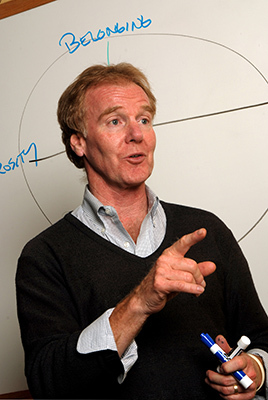
What is different about learning outcomes needed for the 21st century versus the 20th century in terms of the key competencies required? How do you see the key competencies required of teachers to enable this?
The key differences in competencies I believe lay in the depth of understanding; interdependency اور تعاون کی تعریف; اور دوبارہ سر, heart and hand. Children need to come to a deep confidence that they can learn, that they can solve complex problems and that they can do this together. The problems we face in our societies – from global problems with like climate change to more local ones like inequity and loss of purpose and connection to one another – are beyond the reach of existing institutions and their reliance on hierarchical authority. People need to collaborate to solve these problems and this is where students need to build new competencies. Fostering this collaborative learning of how to face the challenges that mean the most to us will require teachers who are engaged in building the same competencies. We teach who we are not just what we know. Teachers who are used to working in silos and standing and delivering the curriculum will be unable to meet the needs of today’s learners. This is why leadership, like principals who build school cultures of collaboration and risk taking, is so important.
What do you see as the most concerning shortcomings of the 21st century learning environment? How can teachers and students work to counteract these shortcomings?
Fragmentation and excessive individual competition destroy the natural spirit of learners who truly want to learn. Over a very long time, school has become a place of performing for a teacher’s approval, or scoring on the test. This was never conducive to learning and it is less credible for students who no longer expect teachers to be the font of all knowledge, since they have access to so much information on their own, but really need teachers who join the learning process with them, as guides and co-learners. Fragmentation can only be overcome by an education process that is deeply rooted in the interconnectedness of knowledge, just as excessive competition can only be overcome by building cultures that strike a more healthy balance between individual and collective learning.

What would be your ideal vision for education in 2030?
That the variety of schools matches the variety of learners. We all learn in different ways and a truly learning-centered school (versus a teaching-centered school) will be able to serve many types of learners. Such a school would also be far more embedded in the larger community, so that parents and family are deeply connected as well to the learning process – طالب علموں کو, teachers and community members building more healthy communities.
How do you see the strengths of the IB curriculum and learning system in this regard?
IB has an extraordinary infrastructure to support learning across cultures and contexts. Guided by a shared philosophy of learning as deep human development, IB could be a world leader in continually testing out new ideas and accelerating the spread of fundamental innovations like systems education. Without a good network for testing and diffusing ideas like this that have so much promise, they will never get refined and grow. There is no one answer to what is needed for the future of education. What is most needed is communities of collaboration exploring rigorously the territory of deeper learning that can truly serve our most basic societal needs. My feeling is that the IB network is already stepping into this space.
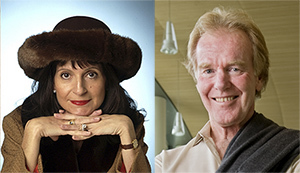
(All photos are courtesy of Peter Senge and the IB Organization)
سر مائیکل باربر سمیت میرے ساتھ اور عالمی سطح پر معروف فکری رہنماؤں (برطانیہ), ڈاکٹر. مائیکل بلاک (امریکہ), ڈاکٹر. لیون Botstein (امریکہ), پروفیسر مٹی Christensen کے (امریکہ), ڈاکٹر. لنڈا ڈارلنگ-ہیمنڈ (امریکہ), ڈاکٹر. MadhavChavan (بھارت), پروفیسر مائیکل Fullan (کینیڈا), پروفیسر ہاورڈ گارڈنر (امریکہ), پروفیسر اینڈی Hargreaves نے (امریکہ), پروفیسر کریں Yvonne ہلمین (نیدرلینڈ), پروفیسر کرسٹن Helstad (ناروے), جین Hendrickson نے (امریکہ), پروفیسر گلاب Hipkins (نیوزی لینڈ), پروفیسر Cornelia Hoogland (کینیڈا), فاضل جیف جانسن (کینیڈا), مسز. چینٹل کوفمین (بیلجیم), ڈاکٹر. EijaKauppinen (فن لینڈ), سٹیٹ سیکرٹری TapioKosunen (فن لینڈ), پروفیسر ڈومینک Lafontaine (بیلجیم), پروفیسر ہیو Lauder (برطانیہ), رب کین میکڈونلڈ (برطانیہ), پروفیسر جیف ماسٹرز (آسٹریلیا), پروفیسر بیری McGaw (آسٹریلیا), شیو ندار (بھارت), پروفیسر R. نٹراجن (بھارت), ڈاکٹر. PAK NG (سنگاپور), ڈاکٹر. ڈینس پوپ (امریکہ), شریدر رازگوپالن (بھارت), ڈاکٹر. ڈیانے Ravitch (امریکہ), رچرڈ ولسن ریلی (امریکہ), سر کین رابنسن (برطانیہ), پروفیسر Pasi Sahlberg (فن لینڈ), پروفیسر Manabu ساتو (جاپان), Andreas کی Schleicher (پیسا, او ای سی ڈی), ڈاکٹر. انتھونی Seldon نے (برطانیہ), ڈاکٹر. ڈیوڈ Shaffer کے (امریکہ), ڈاکٹر. کرسٹن عمیق کر رہے ہیں (ناروے), چانسلر اسٹیفن Spahn (امریکہ), ایوز Theze (LyceeFrancais امریکہ), پروفیسر چارلس Ungerleider (کینیڈا), پروفیسر ٹونی ویگنر (امریکہ), سر ڈیوڈ واٹسن (برطانیہ), پروفیسر Dylan کے Wiliam (برطانیہ), ڈاکٹر. مارک Wormald (برطانیہ), پروفیسر تیو Wubbels (نیدرلینڈ), پروفیسر مائیکل نوجوان (برطانیہ), اور پروفیسر Minxuan جانگ (چین) وہ تمام اقوام کو آج سامنا ہے کہ بڑی تصویر تعلیم سوالات دریافت کے طور پر.
تعلیم کمیونٹی پیج کے لئے گلوبل تلاش
C. M. روبن وہ ایک موصول ہوئی ہے جس کے لئے دو بڑے پیمانے پر پڑھا سیریز کے مصنف ہے 2011 میں Upton سنکلیئر ایوارڈ, “تعلیم کے لئے گلوبل تلاش” اور “کس طرح پڑھیں گے?” انہوں نے تین bestselling کتابوں کے مصنف ہیں, سمیت Wonderland میں یلس اصلی, کے ناشر ہے CMRubinWorld, اور ایک Disruptor فاؤنڈیشن فیلو.
C پر عمل کریں. M. ٹویٹر پر روبن: www.twitter.com/@cmrubinworld


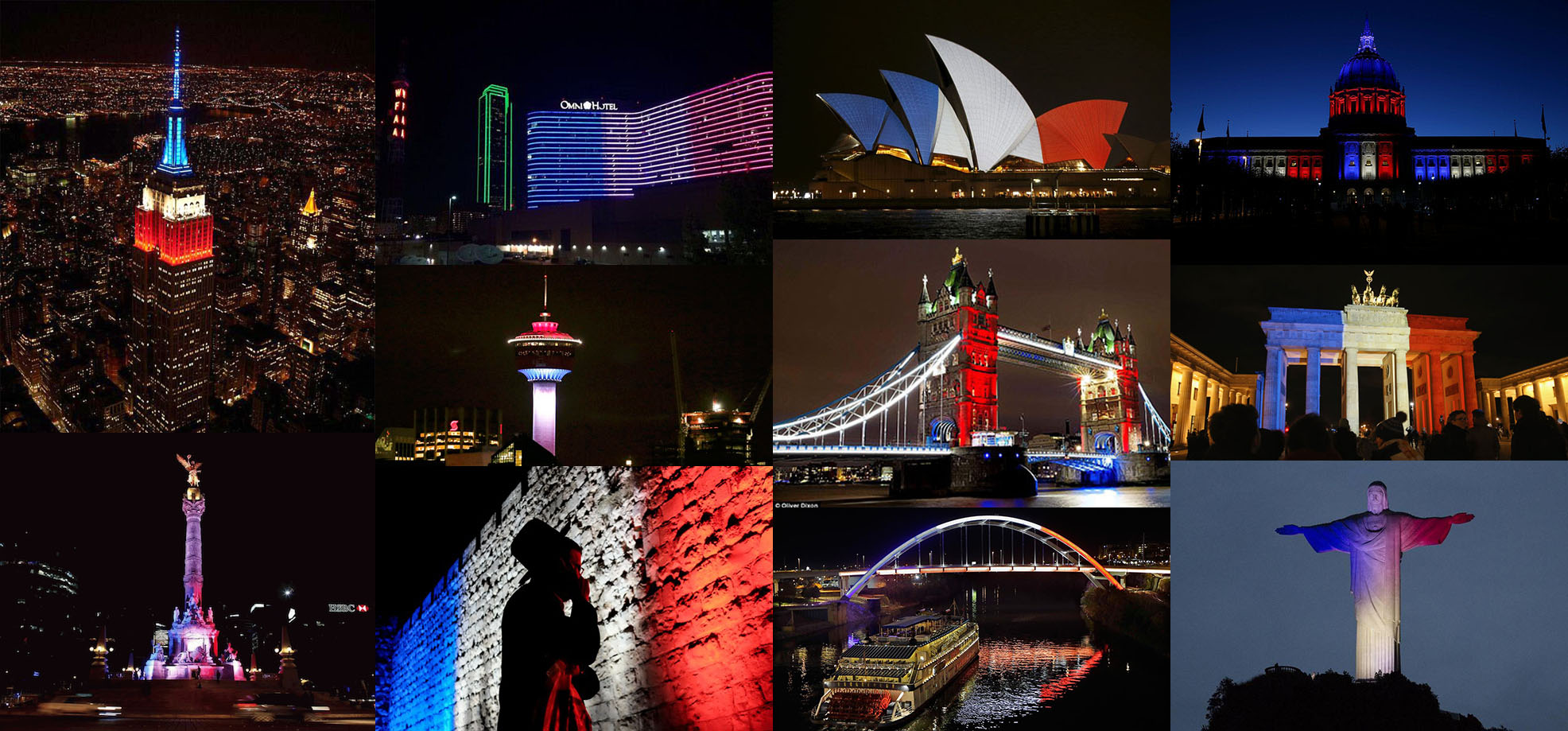
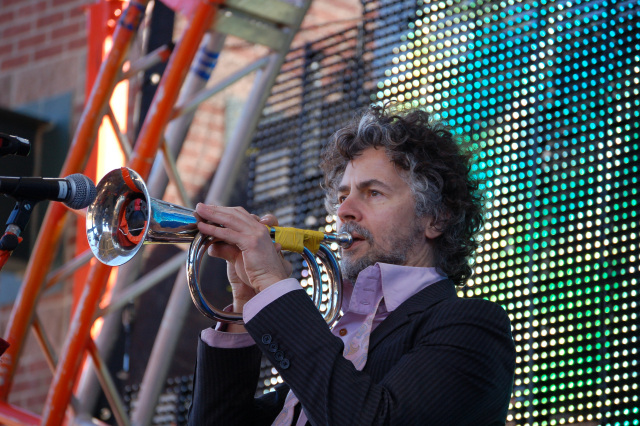

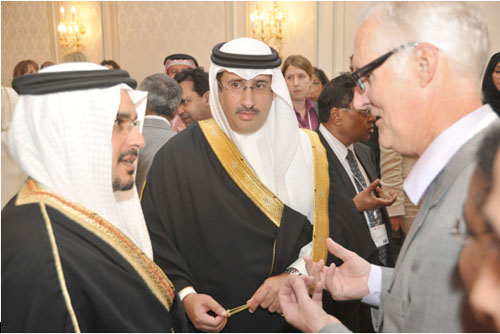
حالیہ تبصرے